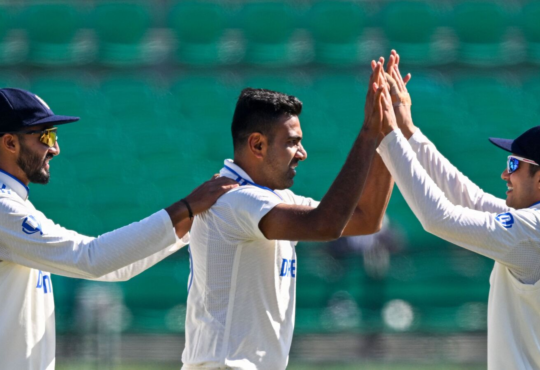Which language would you like to use this site in?
In March 2014 a grainy cell phone video came across my desk that seemed to show a Nigerian soldier murdering an unarmed man in broad daylight. It took me a day and a half to pinpoint the location of this apparent war crime to a specific street corner in Maiduguri, the state capital of Borno and a city of more than 500,000 people.
Confirming the location of an incident is a crucial step in the authentication process, so finding this fact was highly relevant to reference the footage in a report we published on 31 March 2014, exposing war crimes and crimes against humanity committed by the Nigerian military and Boko Haram.
The report documented the killings carried out in January, February and March 2014 by both Boko Haram and the Nigerian Security Forces. It highlights 14 March as a tipping point when the security forces unleashed a brutal crackdown on former detainees.
On 14 March Boko Haram gunmen attacked the Giwa military barracks in Maiduguri, Borno state. They fought their way into the detention facilities and freed several hundred detainees. Amnesty International has received credible evidence that as the military regained control, more than 640 people, mostly unarmed recaptured detainees, were extrajudicially executed in various locations across Maiduguri.
I reviewed close to 150 clips, painting a shocking picture of how both Nigerian armed forces and Boko Haram commit atrocities on an ongoing basis.
Little did I know that this low-quality, 35-second clip was only the tip of the iceberg. Over the next 14 months, I reviewed close to 150 clips, painting a shocking picture of how both Nigerian armed forces and Boko Haram commit atrocities on an ongoing basis. It was at times a gut-wrenching process that without a doubt left its mark on myself and others involved in this work—I would be lying if I’d claim to be a cool investigator that remains unaffected by this grim – and often grisly – content. My hope, though, is that our findings will have a positive and lasting impact on the human rights situation in Nigeria.
The footage—stemming from eyewitnesses and likely perpetrators, captured mainly on cell phones and shared between individuals or on social media—played a crucial role in the research released in our new report today. However, the significance of the accompanying authentication efforts goes beyond Nigeria.
Citizen media is revolutionizing human rights fact-finding, opening up new possibilities for investigations by human rights watchdogs, and potentially also courts.
Citizen media is revolutionizing human rights fact-finding, opening up new possibilities for investigations by human rights watchdogs, and potentially also courts. In order to realize this potential, new methodologies and tools have to be developed. The extensive experience with the footage from Nigeria also allowed me to develop a simple framework for reviewing citizen media for human rights investigations, which I am confident will be replicable elsewhere. Here’s some insight into our work.
Authenticating amateur videos of atrocitiesThe videos we have found predominantly show human rights violations by Nigerian military forces and an associated civilian militia, the so-called Civilian Joint Task Force (Civilian JTF), that uses machetes and other crude weaponry to go after perceived Boko Haram supporters. In order to use the videos, we had to first carefully review and authenticate them—the risk of inaccuracies is enormous, as can be witnessed by regular blunders in reporting. While verifying citizen media often centres on confirming the date and location of an incident, in human rights fact-finding it is also important to interview eyewitnesses and identify specific violations and the responsible perpetrators.
Going back to the above-mentioned video, the poor quality of the footage made it unlikely to draw any conclusions about the location or date of the incident at first sight. However, a careful frame-by-frame review allowed me to identify characteristics such as a paved road, an elevated middle strip, T-shaped street lamps, and that the incident happened at an intersection. Poring over hours of satellite imagery on Google Earth allowed me to identify a likely location, which was later confirmed by a series of geo-tagged photographs of the same incident, highlighting the importance of both content analysis and metadata review in the authentication process.
In the following weeks and months, more videos and photographs from March 14, 2014 emerged. The files included highly graphic footage of Nigerian soldiers cutting the throat of several men. In this case, our researchers were able to obtain the original video files, allowing me to extract metadata such as a timestamp, confirming the date of the incident.
Using citizen media in human rights investigationsMy methodology centres on metadata analysis and content review, which proved highly successful in authenticating footage from Nigeria. Content analysis, which was done by reviewing the footage in slow motion, not only allowed me to identify specific geographic features, but also details such as inventory numbers of weaponry or military vehicles, which can be crucial evidence to identify specific units, and most importantly, command responsibility.
Content analysis not only allowed me to identify specific geographic features, but also details such as inventory numbers of weaponry or military vehicles, which can be crucial evidence to identify specific units, and most importantly, command responsibility.
For example, details in the video of Nigerian soldiers cutting the throats of several men suggest that they belong to the Support Company of the 81 Battalion. Such findings might go beyond human rights fact-finding and have political or legal implications. The International Criminal Court is currently conducting a preliminary examination into the armed conflict in north east Nigeria. Additionally, national legislation, such as the Leahy Law in theUSA, prohibit military aid to foreign security forces that are implicated in serious violations of human rights. It is precisely these sort of details on unit involvement and command responsibility that have serious implications on the vetting process of the Leahy Law.
An analytic framework for authenticating citizen media should also include the preservation of footage, investigating the source, expert consultation if necessary (such as forensics experts), and ethical and risk considerations. If you watch Amnesty International’s video on Nigeria from last August, you’ll notice the anonymization of individuals – including the perpetrators – by blurring their faces. In the case of Nigeria, the verification process included corroboration of the events shown in the video by eyewitness testimony and other information from reliable sources on the ground, including a number of military officials. Due to the large amount of footage, some of the videos themselves provided a degree of authentication. For example, during a screening operation of hundreds of men, after which 35 were arrested and later executed by the military in the town of Bama in late July 2013, eyewitnesses were at one point filming each other.
It is important to highlight that all of the analysis was done with freely available tools such as MediaInfo, Google Earth Pro and VLC (a full list of tools can be found in Amnesty International’s Citizen Evidence Lab).
The international outcry over pictures and videos coming out of other inaccessible conflict zones has been enormous in the recent past. Let’s hope that this footage from Nigeria and our overall findings will have a similar effect, prompting urgent investigations into the many atrocities that have taken place across the north-east of the country. The surviving victims and their relatives have the right to see their abusers face justice.
PS: If you want to learn more about using citizen media in war crimes investigations, and are based in London, stop by my workshop at the News Impact Summit on 5 June.
This article first appeared in New African Magazine
Read more:
Nigeria: Senior members of military must be investigated for war crimes (News Story, 3 June 2015)
Nigeria: Stars on their shoulders. Blood on their hands: War crimes committed by the Nigerian military (Report, 3 June 2015)
If you are talented and passionate about human rights then Amnesty International wants to hear from you.
44views
add a comment







